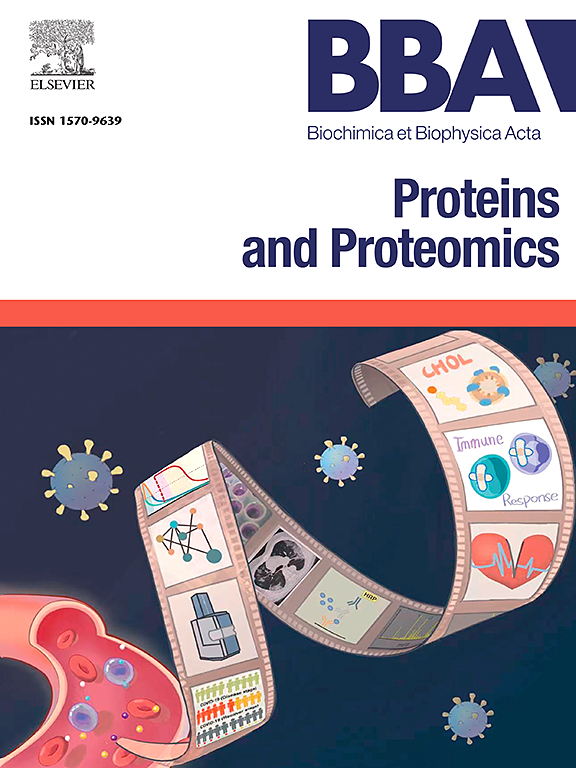Elucidation of multifunctionality and substrate specificity of human aspartate aminotransferases
IF 2.3
4区 生物学
Q3 BIOCHEMISTRY & MOLECULAR BIOLOGY
Biochimica et biophysica acta. Proteins and proteomics
Pub Date : 2025-05-30
DOI:10.1016/j.bbapap.2025.141081
引用次数: 0
Abstract
d-Serine and d-aspartate play crucial physiological roles in mammals. d-Serine is produced by serine racemase, but the biosynthetic pathway of d-aspartate remains unclear. In this study, we investigated the substrate specificity and multifunctionality of human aspartate aminotransferases (hGOT1 and hGOT2) to reveal whether they possess d-Amino acid metabolic activity. Neither enzyme displayed racemase activity toward various amino acids including aspartate, although slight alanine racemase activity was detected. Likewise, neither exhibited lyase, dehydratase, or aspartate decarboxylase activities. Regarding aminotransferase activity, both displayed high activity toward l-aspartate and l-glutamate as amino donors, and they acted on some l-Amino acids, but not d-Amino acids. Intriguingly, we found that aminotransferase activity for oxaloacetate followed sigmoidal kinetics rather than typical Michaelis-Menten kinetics. Thermal shift assay experiments suggested that pyridoxal-5′-phosphate and oxaloacetate are involved in protein stability and the ability to bind oxaloacetate is different from hGOT1 and hGOT2. In summary, hGOTs accept some amino donors and acceptors and unique capacity to bind oxaloacetate.

人天冬氨酸转氨酶的多功能性和底物特异性的阐明。
d-丝氨酸和d-天冬氨酸在哺乳动物中起着重要的生理作用。d-丝氨酸是由丝氨酸消旋酶产生的,但d-天冬氨酸的生物合成途径尚不清楚。在这项研究中,我们研究了人类天冬氨酸转氨酶(hGOT1和hGOT2)的底物特异性和多功能性,以揭示它们是否具有d -氨基酸代谢活性。两种酶均对包括天冬氨酸在内的多种氨基酸显示外消旋酶活性,但检测到轻微的丙氨酸外消旋酶活性。同样,两者均未表现出裂解酶、脱水酶或天冬氨酸脱羧酶活性。在转氨酶活性方面,它们对l-天冬氨酸和l-谷氨酸表现出较高的活性,并且对某些l-氨基酸起作用,而对d -氨基酸不起作用。有趣的是,我们发现草酰乙酸的转氨酶活性遵循s型动力学而不是典型的Michaelis-Menten动力学。热移实验表明,吡哆醛-5′-磷酸和草酰乙酸参与了蛋白质的稳定性,并且与hGOT1和hGOT2结合草酰乙酸的能力不同。总之,hgot接受一些氨基供体和受体,并具有独特的结合草酰乙酸的能力。
本文章由计算机程序翻译,如有差异,请以英文原文为准。
求助全文
约1分钟内获得全文
求助全文
来源期刊
CiteScore
8.00
自引率
0.00%
发文量
55
审稿时长
33 days
期刊介绍:
BBA Proteins and Proteomics covers protein structure conformation and dynamics; protein folding; protein-ligand interactions; enzyme mechanisms, models and kinetics; protein physical properties and spectroscopy; and proteomics and bioinformatics analyses of protein structure, protein function, or protein regulation.

 求助内容:
求助内容: 应助结果提醒方式:
应助结果提醒方式:


